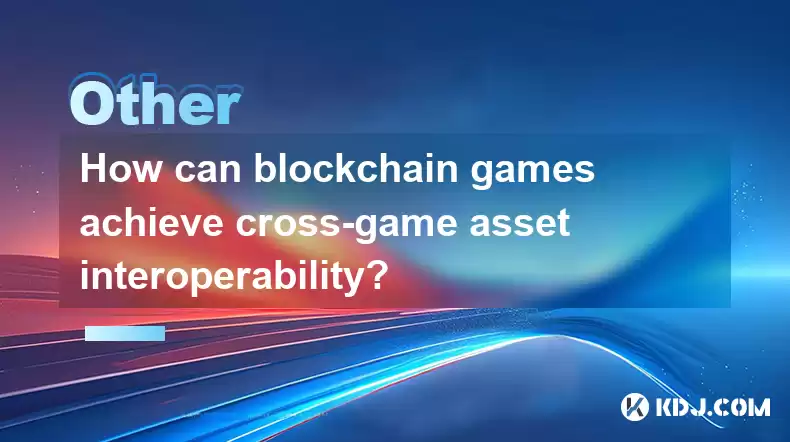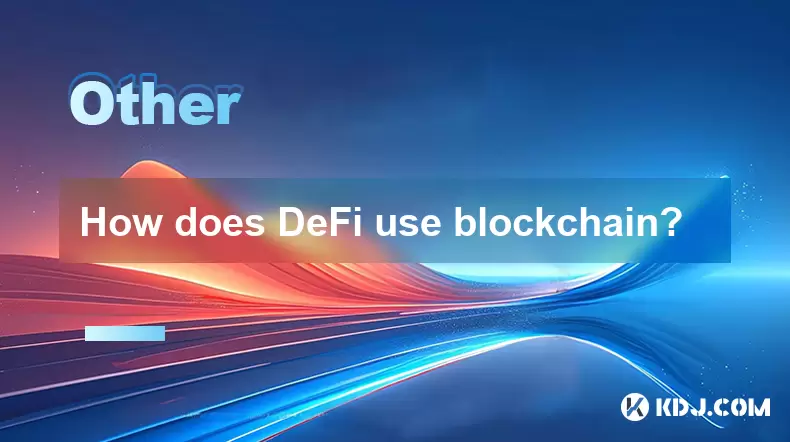-
 Bitcoin
Bitcoin $114400
1.85% -
 Ethereum
Ethereum $3496
2.62% -
 XRP
XRP $2.916
4.75% -
 Tether USDt
Tether USDt $0.9999
0.02% -
 BNB
BNB $751.9
1.74% -
 Solana
Solana $161.2
2.07% -
 USDC
USDC $0.9998
0.00% -
 TRON
TRON $0.3263
1.56% -
 Dogecoin
Dogecoin $0.1987
3.05% -
 Cardano
Cardano $0.7251
4.06% -
 Hyperliquid
Hyperliquid $38.43
4.78% -
 Stellar
Stellar $0.3966
8.00% -
 Sui
Sui $3.431
3.15% -
 Chainlink
Chainlink $16.27
4.03% -
 Bitcoin Cash
Bitcoin Cash $543.3
3.53% -
 Hedera
Hedera $0.2480
8.38% -
 Ethena USDe
Ethena USDe $1.001
0.03% -
 Avalanche
Avalanche $21.38
2.30% -
 Toncoin
Toncoin $3.640
3.41% -
 Litecoin
Litecoin $109.2
3.30% -
 UNUS SED LEO
UNUS SED LEO $8.956
-0.15% -
 Shiba Inu
Shiba Inu $0.00001219
3.22% -
 Polkadot
Polkadot $3.602
3.15% -
 Uniswap
Uniswap $9.153
4.03% -
 Monero
Monero $301.2
3.86% -
 Dai
Dai $0.9999
-0.01% -
 Bitget Token
Bitget Token $4.320
1.80% -
 Pepe
Pepe $0.00001046
4.06% -
 Cronos
Cronos $0.1321
5.83% -
 Aave
Aave $259.0
3.73%
How can blockchain games achieve cross-game asset interoperability?
Blockchain games enable cross-game asset interoperability, allowing players to use their NFTs across different games, enhancing asset value and gaming experience.
Apr 16, 2025 at 09:35 am

Blockchain games have revolutionized the gaming industry by introducing the concept of true ownership of in-game assets. One of the most exciting developments in this space is the ability to achieve cross-game asset interoperability. This means that players can use their digital assets across different games, enhancing the value and utility of their holdings. In this article, we will explore how blockchain games can achieve this interoperability, the technologies involved, and the steps required to implement it.
Understanding Cross-Game Asset Interoperability
Cross-game asset interoperability refers to the ability of players to use their digital assets, such as characters, weapons, or skins, in multiple games. This is made possible through blockchain technology, which provides a secure and transparent way to track and transfer ownership of these assets. By leveraging blockchain, game developers can create a seamless experience where players can move their assets from one game to another without losing their value or functionality.
The Role of Blockchain in Interoperability
Blockchain technology is the backbone of cross-game asset interoperability. It allows for the creation of non-fungible tokens (NFTs), which are unique digital assets that can represent anything from a piece of art to an in-game item. These NFTs are stored on the blockchain, ensuring that their ownership and history are immutable and verifiable. This technology enables game developers to create a standardized system where assets can be recognized and utilized across different games.
Standards and Protocols for Interoperability
To achieve cross-game asset interoperability, game developers must adhere to certain standards and protocols. One of the most widely used standards is ERC-721, an Ethereum-based standard for NFTs. This standard ensures that NFTs can be easily transferred and recognized across different platforms. Additionally, protocols like InterPlanetary File System (IPFS) can be used to store the metadata of these assets, ensuring that they remain accessible and verifiable.
Implementing Cross-Game Asset Interoperability
Implementing cross-game asset interoperability involves several steps that game developers must follow. Here is a detailed guide on how to achieve this:
Create NFTs for In-Game Assets: The first step is to create NFTs for the in-game assets that you want to be interoperable. This involves minting these assets on a blockchain that supports NFTs, such as Ethereum. Each NFT should have a unique identifier and metadata that describes its properties.
Integrate with a Blockchain Platform: Once the NFTs are created, the next step is to integrate your game with a blockchain platform. This involves setting up smart contracts that can manage the transfer and ownership of these NFTs. Platforms like Ethereum, Binance Smart Chain, and Flow are popular choices for this purpose.
Develop a Standardized API: To ensure that your NFTs can be used across different games, you need to develop a standardized API that other developers can use to interact with your assets. This API should allow for the retrieval of asset metadata, the transfer of ownership, and the verification of asset authenticity.
Collaborate with Other Game Developers: Cross-game asset interoperability requires collaboration between different game developers. By working together, developers can ensure that their games support the same standards and protocols, making it easier for players to use their assets across different games.
Test and Iterate: Finally, it is important to test the interoperability of your assets across different games. This involves creating test scenarios where players can transfer their assets and use them in different games. Based on the feedback and results, you can iterate and improve the interoperability of your assets.
Benefits of Cross-Game Asset Interoperability
Cross-game asset interoperability offers several benefits to both players and game developers. For players, it means that they can get more value out of their in-game assets, as they can use them in multiple games. This can lead to a more engaging and rewarding gaming experience. For game developers, interoperability can attract more players to their games, as players are more likely to invest in assets that they can use across different games. Additionally, it can foster a sense of community and collaboration among different game developers, leading to more innovative and exciting games.
Challenges and Considerations
While cross-game asset interoperability offers many benefits, there are also several challenges and considerations that game developers must keep in mind. One of the main challenges is ensuring the security and integrity of the assets. Since these assets are valuable, they can be targets for hackers and scammers. Game developers must implement robust security measures to protect their players' assets.
Another consideration is the complexity of implementing interoperability. It requires a deep understanding of blockchain technology and the standards and protocols involved. Game developers must invest time and resources into learning and implementing these technologies, which can be a barrier for some.
Additionally, there is the issue of scalability. As more games and assets are added to the ecosystem, the blockchain network can become congested, leading to slower transaction times and higher fees. Game developers must find ways to scale their solutions to handle the increased demand.
Frequently Asked Questions
Q: Can cross-game asset interoperability be achieved without using blockchain technology?
A: While it is theoretically possible to achieve some level of interoperability without blockchain, the security, transparency, and immutability provided by blockchain make it the most viable solution for true cross-game asset interoperability.
Q: Are there any existing examples of games that have successfully implemented cross-game asset interoperability?
A: Yes, there are several examples of games that have successfully implemented cross-game asset interoperability. For instance, the Enjin platform allows for the creation and use of NFTs across multiple games, and games like Axie Infinity and Decentraland have also implemented interoperability features.
Q: How can players ensure the security of their interoperable assets?
A: Players can ensure the security of their interoperable assets by using secure wallets, enabling two-factor authentication, and being cautious of phishing attempts. Additionally, they should only use reputable platforms and games that have strong security measures in place.
Q: What role do smart contracts play in cross-game asset interoperability?
A: Smart contracts play a crucial role in cross-game asset interoperability by automating the transfer and management of NFTs. They ensure that the rules and conditions for asset transfer are enforced, providing a trustless and efficient way to manage interoperable assets.
Disclaimer:info@kdj.com
The information provided is not trading advice. kdj.com does not assume any responsibility for any investments made based on the information provided in this article. Cryptocurrencies are highly volatile and it is highly recommended that you invest with caution after thorough research!
If you believe that the content used on this website infringes your copyright, please contact us immediately (info@kdj.com) and we will delete it promptly.
- Bitcoin Price Wobbles: Options Analysis Points to Bullish Undercurrent Despite Dip
- 2025-08-04 04:30:12
- Ark Invest, Coinbase, and Bitcoin: Decoding the Crypto Investment Landscape in NYC
- 2025-08-04 04:30:12
- LILPEPE, Cardano, and Shiba Inu: The 2025 Crypto Landscape
- 2025-08-04 04:50:12
- Cold Wallet, Token Rewards, and Crypto Usage: A New Era?
- 2025-08-04 04:50:12
- Navigating the Wild West: Token Unlocks and Altcoin Surges - A Trader's Guide
- 2025-08-04 02:30:11
- AI, Crypto, and the Frontier: Riding the Wave of Innovation
- 2025-08-04 03:50:11
Related knowledge

What is the difference between on-chain and off-chain transactions?
Aug 02,2025 at 04:22pm
Understanding On-Chain TransactionsOn-chain transactions refer to digital asset transfers that are recorded directly on a blockchain ledger. These tra...

What is a node's role in a blockchain network?
Aug 03,2025 at 03:16pm
Understanding the Function of a Node in a Blockchain NetworkA node is a fundamental component of any blockchain network, acting as a participant that ...

How are transactions verified on a blockchain?
Aug 04,2025 at 12:35am
Understanding the Role of Nodes in Transaction VerificationIn a blockchain network, nodes are fundamental components responsible for maintaining the i...

What is the double-spending problem and how does blockchain prevent it?
Aug 02,2025 at 01:07pm
Understanding the Double-Spending ProblemThe double-spending problem is a fundamental challenge in digital currency systems where the same digital tok...

What is the difference between a blockchain and a database?
Aug 01,2025 at 09:36pm
Understanding the Core Structure of a BlockchainA blockchain is a decentralized digital ledger that records data in a series of immutable blocks linke...

How does DeFi use blockchain?
Aug 03,2025 at 11:15pm
Understanding the Role of Blockchain in DeFiDecentralized Finance (DeFi) relies fundamentally on blockchain technology to operate without intermediari...

What is the difference between on-chain and off-chain transactions?
Aug 02,2025 at 04:22pm
Understanding On-Chain TransactionsOn-chain transactions refer to digital asset transfers that are recorded directly on a blockchain ledger. These tra...

What is a node's role in a blockchain network?
Aug 03,2025 at 03:16pm
Understanding the Function of a Node in a Blockchain NetworkA node is a fundamental component of any blockchain network, acting as a participant that ...

How are transactions verified on a blockchain?
Aug 04,2025 at 12:35am
Understanding the Role of Nodes in Transaction VerificationIn a blockchain network, nodes are fundamental components responsible for maintaining the i...

What is the double-spending problem and how does blockchain prevent it?
Aug 02,2025 at 01:07pm
Understanding the Double-Spending ProblemThe double-spending problem is a fundamental challenge in digital currency systems where the same digital tok...

What is the difference between a blockchain and a database?
Aug 01,2025 at 09:36pm
Understanding the Core Structure of a BlockchainA blockchain is a decentralized digital ledger that records data in a series of immutable blocks linke...

How does DeFi use blockchain?
Aug 03,2025 at 11:15pm
Understanding the Role of Blockchain in DeFiDecentralized Finance (DeFi) relies fundamentally on blockchain technology to operate without intermediari...
See all articles

























































































